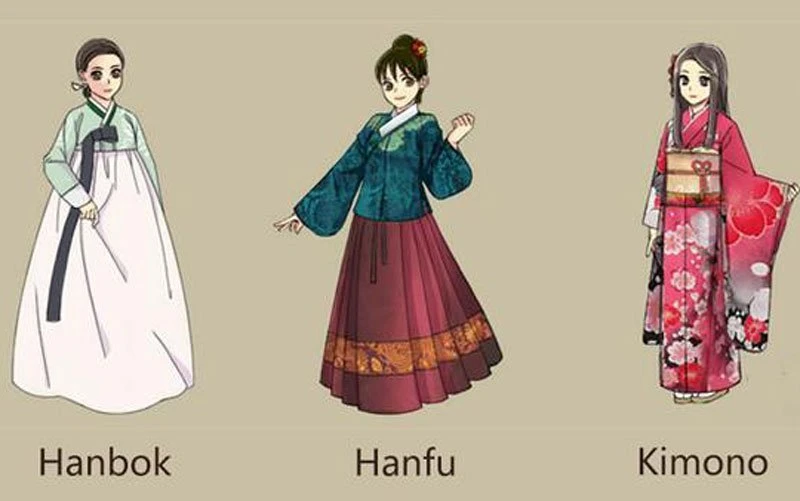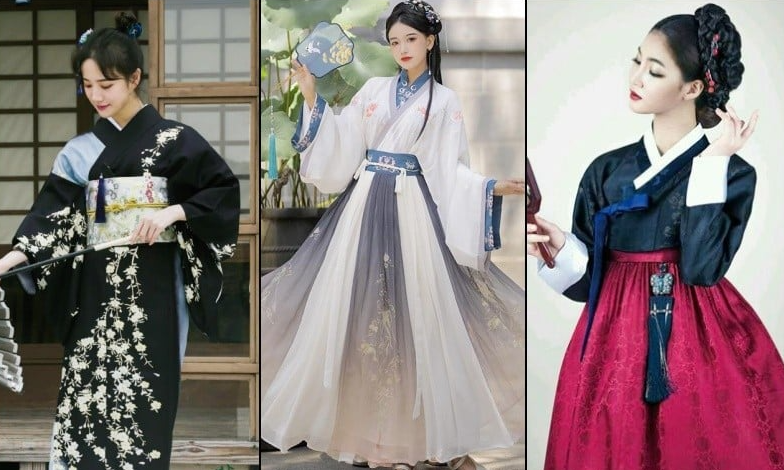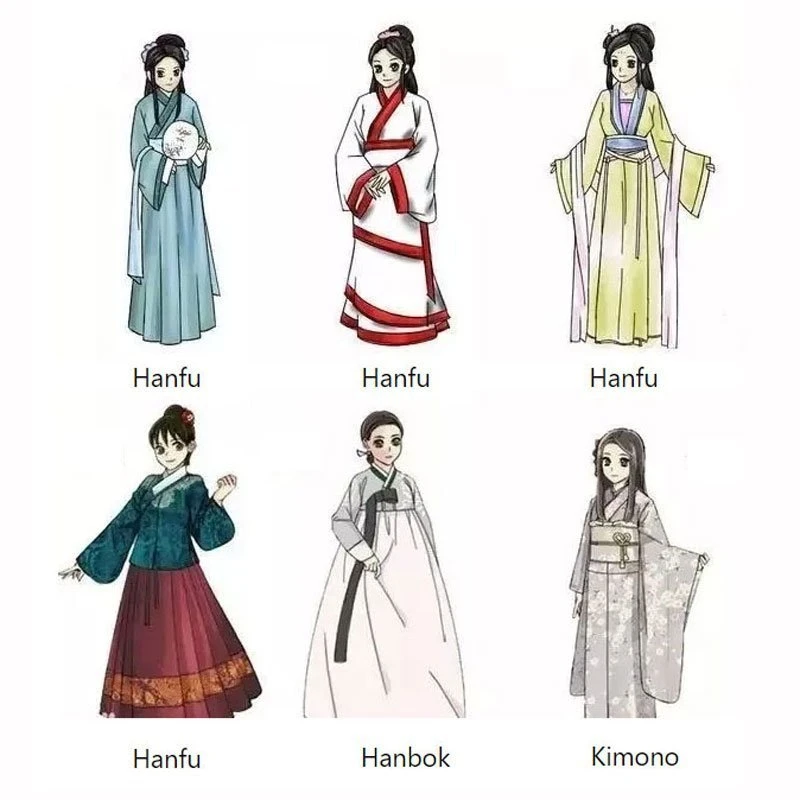Exploring the Rich Tapestry of Traditional Asian Attire
The hanfu, kimono, and hanbok are not merely garments; they are the embodiment of the rich cultural heritage of China, Japan, and Korea respectively. As we delve into the intricacies of these traditional attires, we uncover a world of artistry, symbolism, and history that is as diverse as the regions from which they originate. Each style tells a unique story, reflecting the ethos of its people and the evolution of their societies.

The Elegance of Hanfu
The hanfu, with its origins dating back to the Yellow Emperor, is a testament to the ancient Chinese civilization. Its flowing silhouette and intricate patterns are not just a fashion statement but a reflection of the cosmic order and the philosophy of harmony between humanity and nature. As I journey through the history of hanfu, I am struck by the way it has been adapted and preserved through dynasties, embodying the essence of Chinese tradition.

Kimonos: A Reflection of Japanese Aesthetics
The kimono is a masterpiece of Japanese craftsmanship, where each fold and seam is steeped in meaning. The traditional attire is not only a garment but also a canvas for expressing the seasons, social status, and personal taste. The kimono’s evolution from the Heian period to the modern era is a narrative of Japan’s cultural development and its people’s pursuit of beauty and elegance.

Hanbok: The Pride of Korean Tradition
The hanbok is a symbol of Korean national pride, with its vibrant colors and geometric patterns representing the country’s rich cultural identity. The hanbok’s design is deeply rooted in the principles of symmetry and balance, reflecting the Korean philosophy of ‘jeong’ – a deep sense of empathy and connection. As I explore the hanbok, I am drawn to the way it harmoniously blends form and function, tradition and innovation.

A Common Thread: Cultural Preservation and Evolution
“Fashion is part of the daily air and it changes all the time, with all events.” – Diana Vreeland
As we navigate through the styles of hanfu, kimono, and hanbok, we recognize a common thread of cultural preservation and evolution. Each of these traditional attires has not only survived but also adapted to the changing times, proving their timeless appeal and significance. They serve as a bridge between the past and the present, allowing us to appreciate the depth of our cultural roots while embracing contemporary interpretations.
Conclusion: The Timeless Appeal of Traditional Asian Attire
In conclusion, the journey through hanfu, kimono, and hanbok is a celebration of the enduring spirit of Asian culture. These traditional attires are more than just Clothing; they are living artifacts that continue to inspire and influence fashion and art across the globe. As we embrace the beauty and history of these garments, we also acknowledge the importance of preserving and cherishing our cultural heritage for future generations.








My queer friend’s hanfu-wearing wedding challenged stereotypes! The article touched on evolution but missed how LGBTQ+ communities are reclaiming these garments with non-binary cuts and rainbow embroidery.
As a vegan, I struggle with kimono’s silk use. The article celebrates craftsmanship but doesn’t mention modern alternatives like Tencel-woven kimono. Tradition and ethics can coexist!
As a traveler, I’m always looking for authentic cultural experiences. The article’s suggestion to visit countries where these garments are worn traditionally is a great tip for immersing oneself in local culture.
As a fashion blogger, I’m always on the lookout for unique styles. The article’s exploration of the design aesthetics of hanfu, kimono, and hanbok is a goldmine of inspiration. These garments offer a perfect blend of tradition and innovation.
I’m a fashion critic, and I appreciate the article’s balanced view of traditional attire. While it celebrates their cultural significance, it also acknowledges their adaptability to modern fashion, making them relevant in today’s world.
Kimono rental shops in Tokyo prove these garments aren’t relics but living traditions. The article’s ‘past vs present’ framing feels reductive—they coexist dynamically!
That quote by Diana Vreeland feels forced. The article shines when focusing on cultural specifics but stumbles with generic fashion platitudes.
The article’s conclusion about the timeless appeal of traditional Asian attire is absolutely correct. These garments are living artifacts that continue to inspire fashion worldwide. It’s crucial to preserve and cherish our cultural heritage for future generations.
As a collector of traditional garments, I found the article’s discussion of the durability and maintenance cost of hanfu, kimono, and hanbok very relevant. These garments are investments that require care but offer timeless beauty and cultural value.
I’m a minimalist, and I appreciate the simplicity and elegance of traditional attire. The hanfu, kimono, and hanbok are designed with clean lines and minimal embellishments, reflecting a philosophy of understated beauty.